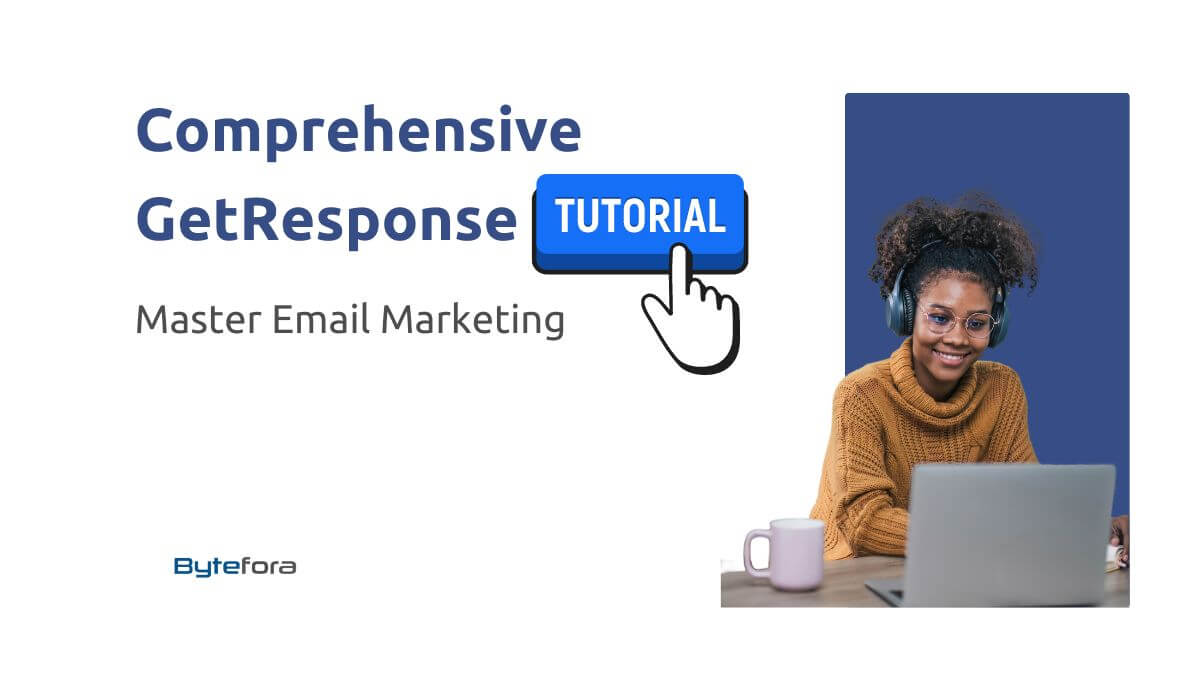Understanding Your Motivation: Reasons to Delete Your GetResponse Account
Before you proceed with deleting your GetResponse account, it’s crucial to understand the factors that might be driving this decision. There are several common reasons why individuals and businesses consider this step.
One prominent reason is the decision to switch to a different email marketing service. As your business evolves, you might find that another platform offers features better suited to your current needs. For instance, you might need more advanced automation tools, better integration with other marketing software, or a more intuitive user interface that other services provide. Each email marketing tool has its own set of strengths, and aligning these with your specific requirements is essential for optimal performance.
Another frequent motivation is the need to cut down on expenses. Email marketing platforms, including GetResponse, come with recurring subscription fees. These costs can accumulate, especially for small businesses or startups with limited budgets. If you’re looking for more cost-effective solutions, exploring cheaper or even free alternatives might make sense. Re-evaluating your expenses and their impact on your overall financial health is a necessary part of business management.
Additionally, your marketing needs might have changed over time. Perhaps your business model has shifted, or your customer engagement strategies are no longer reliant on extensive email marketing campaigns. In such cases, maintaining a GetResponse account may no longer be practical. Some businesses find that their communication strategies pivot towards social media, direct sales, or other platforms that better serve their new objectives.
Understanding these motivations not only validates your decision to delete your GetResponse account but also ensures that you make an informed choice. Reflecting on your reasons helps you confirm that this step aligns with your overall business strategy and operational needs.
Preparing for Account Deletion: Backing Up Data and Important Considerations
Once you decide to delete your GetResponse account, preparation is crucial to ensure a smooth transition with minimal disruption to your workflow. The first step involves backing up all essential data. Start by exporting your contact lists, which can be done through the “Contacts” section of your GetResponse dashboard. Download these lists in CSV or XLS format to ensure you have access to your contacts after the account is deleted.
Next, focus on preserving your email templates. Navigate to the “Email Marketing” section, where you can export your saved email templates individually. This step is vital, especially if you plan to migrate to another email marketing platform. Having your templates handy will save you considerable time and effort in recreating them from scratch.
Additionally, pay attention to your analytical data. Reports and analytics offer valuable insights into your campaigns’ performance, and losing this information could be detrimental. Export reports on campaign performance, click-through rates, and other critical metrics from the “Reports” section of your dashboard. Having this data will help maintain a historical record of your marketing efforts and assist in future strategy planning.
There are other essential considerations before proceeding with account deletion. Review your billing cycles to avoid any unnecessary charges. Ensure that there are no outstanding invoices and understand the refund policy if applicable. Additionally, think about the impact on your autoresponders. Once your account is deleted, these automated messages will cease to function, which could affect your communication with subscribers.
Lastly, make sure there are no unresolved support tickets or pending issues with GetResponse. Addressing these matters beforehand will prevent any complications during the account deletion process. By systematically backing up your data and considering these critical aspects, you can ensure a seamless transition while minimizing any potential setbacks.
Step-by-Step Process: How to Delete Your GetResponse Account
Deleting your GetResponse account involves a series of steps to ensure that your decision is secure and verified. Follow the detailed instructions below to effectively remove your account from the platform.
Firstly, log in to your GetResponse account using your registered username and password. This allows you to access the necessary account settings. Once logged in, locate the Profile icon or Account Settings option, typically found in the top-right corner of the dashboard. Clicking this will open a dropdown menu or direct you to a settings page.
Next, navigate to the Account Management section within the settings. This section may be labelled differently, such as Account Details or Preferences, depending on the version of GetResponse you are using. In this section, search for an option that indicates Account Termination or Delete Account.
Once you find the account deletion option, click on it. GetResponse will usually present a confirmation screen before proceeding. This screen explains the implications of deleting your account, such as loss of access to saved campaigns, contacts, and analytics. Ensure that you have backed up any important data before moving forward.
After reading the information, if you still wish to delete your account, you will need to confirm your decision. Most often, this involves re-entering your password for verification purposes. This step ensures that the deletion request is being made by the account owner.
Following the confirmation, you may receive a final prompt to review the decision. Confirm once more, and GetResponse will process your request. You might receive an email notification to inform you of the successful account deletion.
While the steps outlined above are comprehensive, using visual aids like screenshots can significantly enhance clarity and support your understanding during the process. Consider finding these images within GetResponse’s help documentation or support resources.
Post-Deletion Actions: What to Do After Deleting Your GetResponse Account
Upon successfully deleting your GetResponse account, it is essential to confirm the deletion status. Often, the platform will send an email notification verifying that your account has been permanently removed. Make sure to double-check this confirmation to avoid any future complications.
Next, it is crucial to inform your team or stakeholders about the account deletion. Communication is key in ensuring that all parties involved are aware of the change and can adjust their workflows accordingly. This is particularly important if your marketing efforts were heavily reliant on GetResponse, as they may need to adopt new practices or tools.
Post-deletion, you will need to manage any tasks that previously depended on the GetResponse service. This could involve updating your mailing lists, migrating data, or even reconfiguring automated workflows that were set up through GetResponse. Evaluate which tasks require immediate attention and prioritize them to ensure a smooth transition.
Transitioning to a new email marketing platform is an integral part of moving forward. Begin by researching popular alternatives that could better suit your current needs. Some reputable options include Mailchimp, Constant Contact, and ActiveCampaign. Each of these platforms offers unique features and pricing structures, so take the time to compare them to find the best fit for your business.
Starting anew with another email marketing platform involves setting up your account, importing contact lists, and familiarizing yourself with the new system’s interface and functionalities. Most platforms offer tutorials and customer support to assist with the transition. It’s recommended to take advantage of these resources to minimize any disruptions in your marketing efforts.
In conclusion, after deleting your GetResponse account, confirm the deletion, inform your team, manage dependent tasks, and transition to a new email marketing platform. By taking these steps, you can ensure continuity in your marketing activities and better align them with your current business requirements.



